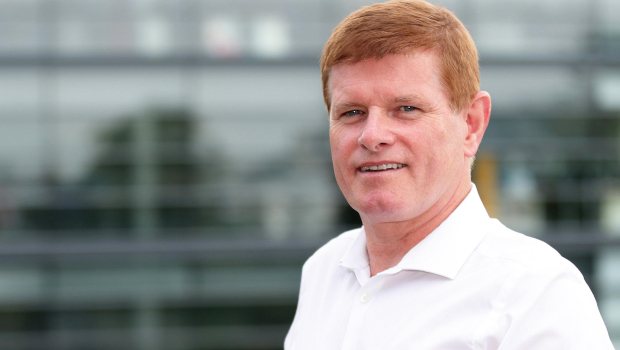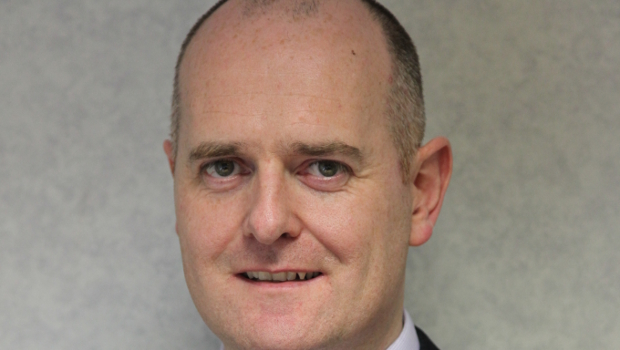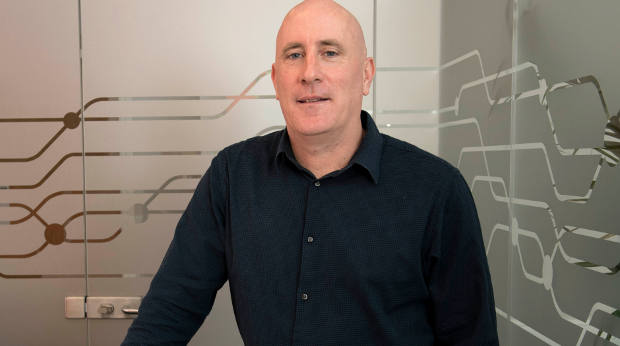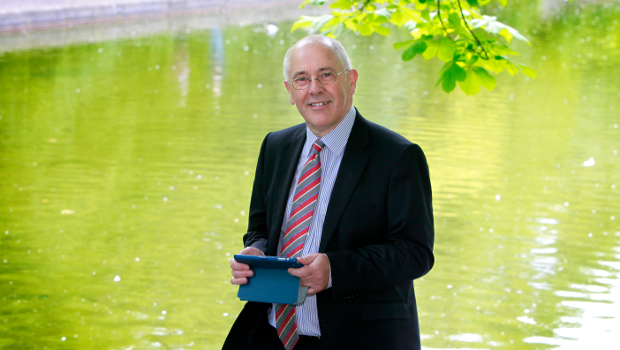Half way through 2019, what have the been highlights and low points of the year for channel partners and IT businesses? What technologies have provided growth areas and where are clients spending their money? Will the rest of the year be better, worse or the same as the first half of 2019?
Mark McHale, VP sales Arrow ECS, NW EMEA
“There has been continued growth in the market,” McHale says, although he acknowledges that “staff recruitment remains a challenge. The skills gap in IT is getting wider in both sales and technical roles and pushing staff costs up across the board”.
In terms of technologies, he believes that data analytics is “finally delivering on the big data message” which is aligned to “areas of opportunity around IOT, AI and cloud optimisation”.
While cloud, hyper-converged solutions and next generation technologies have been the fastest growing areas, “customers are still buying traditional solutions in large volumes alongside some of the new technologies and solutions available”. On premise is still very much in vogue, he notes, adding that “opportunities exist in key technology areas including AI, IoT, data analytics, data on the edge and large scale solutions with strong and experienced delivery skills to implement”.

McHale has observed “a significant shift to a more solutions-based approach with multi vendors involved in a single deal”. He claims this approach “works well for Arrow, given our view across the technology ecosystem and the large number of partners we bring together and offer as a solution to the market”.
In terms of where the best opportunities have been so far, he singles out hyper converged infrastructure (HCI) and cloud/aggregation for billing as big growth areas for Arrow ECS. HCI is being driven by a large number of digital transformation projects, he states, which “are one of the top priorities for CEO/CIOs who are tasked with transforming their business in terms of time to market, competitive advantage and cost-effective processes to deliver a clearly defined ROI”.
Looking forward to the rest of 2019, he predicts “increasing complexity in the market and the opportunity to provide even more value around solutions and services”. There will also be lots of new niche specialist players coming to market looking for a route to the customer. Additionally, more vendors will seek to offer cloud consumption models to their customers.
Colm Greene, director channel sales, Dell Technologies Ireland
Greene makes no bones about it, describing 2019 to date as “another incredible year in Ireland” for Dell Technologies, revealing the company achieved double digit growth in revenue and profitable share gain across its portfolio, with strong growth in storage. The company added new customers through its channel and its direct business.

He describes 2019 as “an exciting year for partners” with the rebranding of its DellEMC programme to the Dell Technologies Partner Programme, “allowing easier access for partners to all our Technologies Family of Dell, DellEMC, VMware, RSA, Secureworks, Pivotal and Virtustream”. He argues this is “bringing the vision of our Dell Technologies Advantage to partners to help customers realise their digital transformation journey”.
The vendor is also working to improve on its promise of being Simple, Predictable and Profitable, investing more in automation to make it simpler to deal with Dell with improvements in deal registration, quoting and rebate SLAs. It is “delivering on more collaborative go to market strategies with our own sales teams to deliver more predictable long-term outcomes for partners”. Dell is also “making it more profitable for partners to open new and lapsed customers with additional offerings for tech refreshes and competitive swap outs in the data centre.
Transformational projects in the public and private sector are driving strong growth across many parts of the business in Ireland. There is also “accelerated growth in areas such as HCI, multi Cloud, AI and machine learning technologies as well as the more traditional type 3-2-1 architectures in the data centre”.
Looking forward, Greene points to “tail winds in the Irish economy with strong investment across both the public and private offerings”.
Kevin O’Connor, channels manager Ireland, Equinix
Over the past six months, the IT market has started to realise the lifespan in short term opportunities, O’Connor argues. Many have traditionally relied on quarter-by-quarter hardware or software sales for their revenue numbers, but there has been a change of emphasis because enterprises “want a technology partner and not a hardware vendor”. Irish channel partners are starting to realise this trend and adapt to it, “getting ahead of the conversation and driving a digital discussion on where data is located, how it is accessed and what it can do for their clients”.

He views this change in emphasis as “a threat and an opportunity in the market – it threatens shorter term wins for partners, but provides a far greater opportunity to reposition their business at the forefront of digital transformation”.
With many Irish enterprises fully adopting a cloud-first approach, there has been an increase in spending in 2019 which “will only continue going forward”.
Ray Ryan, CEO, OSSM Cloud
“2019 has been an excellent year so far for OSSM Cloud,” Ryan claims. While channel partners offering cloud technologies and solutions have benefited from the rise of cloud computing adoption in recent years, the market has matured quickly in 2019, with more businesses embracing true cloud ERP systems.

He accepts that Brexit brings obvious threats, but “it has already had a positive impact for many channel partners and we see huge potential for new growth. The uncertainty around Brexit has, if not forced, at least encouraged Irish businesses to look to new markets and innovation in areas such as universal communications and augmented reality for industry”.
Ryan says that channel partners that can provide innovative technologies to help businesses capitalise on new opportunities are well positioned to grow. He adds that OSSM Cloud “has some really interesting projects in the pipeline for the remainder of 2019, which will enable Irish businesses to clearly navigate inevitable future challenges much easier through a single cloud ERP platform”.
Neil Wisdom, managing director, Intellicom
“It’s business as usual for us in 2019,” Wisdom remarks, “but that’s a positive statement because we’ve been growing strongly over the last number of years.” One thing he has noticed is that while people have been talking bout unified communications for 20 years, “finally, in my mind, we’re starting to see people genuinely deploying, using and understanding what unified communications means”.

Over the last 12 months, there have been a lot more customers migrating to soft clients, presence and video and a lot more linkage with CRM systems. “It’s something they’ve been talking about for a long time but it hasn’t been deployed. But there’s been a marked increase in our customers paying for and using soft clients,” he observes. “We were quoting a lot for soft clients several years ago, but ultimately people were still buying physical desk phones.”
Traditionally, unified systems were expensive and complicated, so only enterprises could afford them, “now, they’re available to any size of organisation. You can deploy them from five to five thousand users. Smaller companies are realising that they’re available”.
Part of the growing adoption of these systems is the move to recurring revenues and a per user, per month charging structure. “The installation costs and capex costs are being mitigated. It gives users the ability to wipe out the initial cash requirement and replace it with a defined repeatable monthly operational expenditure.” Little wonder that the “vast majority” of what Intellicom does now is cloud-based.
Loman McCaffrey, sales manager, Logicalis Ireland
2019 has been a strong year for Logicalis, McCaffrey says, highlighting its achievement of the Cisco global gold certification, making it “one of only six partners in the world with this distinction”. The company has seen a marked shift towards ‘as a service’ solutions this year driven by a number of factors.
“There is a greater appetite in the market for organisational agility,” he notes. “In increasingly competitive markets where everything is being digitised and rapid change is constant, it is now seen as a prerequisite to maintaining competitiveness.” Organisations are under growing pressure from employees and customers for easy, frictionless access to critical services and the ‘as a service’ model is allowing them to streamline their IT operations to achieve this agility.
McCaffrey believes this represents “a great opportunity for partners and providers that are offering high-quality ‘as a service’ solutions. Conversely, organisations that are providing solely infrastructure-based solutions may find it difficult to compete”. The move from opex to capex is also fuelling the shift to ‘as a service’ solutions.
A major cause for concern is the global shortage of ICT talent with organisations struggling to find the resources they need. Service providers such as Logicalis can help redress this problem by providing access to a wider pool of experts and in-depth specialist knowledge.

He predicts that ‘as a service’ will “continue to grow and disrupt the IT space” in 2019 and 2020, fuelling a reliance on managed service providers to innovate and offer practical solutions for the customer that “meet all of the stated requirements and deliver the desired outcomes”.
With security one of the biggest threats facing organisations, the security capabilities of a service provider “will be a key factor for companies in selecting an ‘as a service’ provider”.
But McCaffrey warns that the drive towards ‘as a service’ requires “a level-headed and considered approach”. It is vital that organisations “build a framework and plan security as part of a cloud deployment from the beginning to allow the agility to be harnessed under the governance of the appropriate framework”.
Rob Curley, managing director, Singlepoint
Curley observes that cloud is becoming standard for a lot of customers and a number are adopting a ‘cloud first’ strategy. Even financial services companies are starting to go down the cloud route. And many are not just using it for SaaS but also to build their own applications and to put some of their core capabilities onto the cloud.
“Something has changed in the last six to 12 months,” he says. “We wouldn’t have often seen organisations willing to go down that route before, they were still looking to put everything in their data centres.”

The company has built its own digital platform over the past 18 months and Curley reveals it has had “a lot of engagement around that and we’ve licensed it to a number of organisations”. Singlepoint has done a lot of work for companies seeking to digitise the customer experience and streamline it via mobile apps or web apps. “A lot of banks and financial services companies are spending money in that space and there’s a lot of work there right now”. He expects more of that work to come the company’s way “based on our success over the last six to 12 months”.
In terms of challenges, he thinks that “a lot of organisations are still struggling with IoT, AI and machine learning. You hear of people doing things in these areas, but when you scratch at the surface, it’s pretty light. They’re trialling or testing the waters, it’s all quite lightweight. I wouldn’t see a huge amount of success in that space for a lot of enterprises to date – they’re still trying to get their heads around these things”.
As for the rest of 2019, there is Brexit and the effect it could have. Also, finding people with technical skills is an issue. Singlepoint is trying to solve this through “a combination of partnering with people and bringing in staff from Brazil and India through sponsorship for very particular skill sets”.
Michael Conway, director, Renaissance
“There are years where nothing very significant or interesting happens but 2019 has been very dynamic,” Conway comments. “It’s gone quickly. The speed of development and economic activity is faster than ever.”
He describes it as one of the challenges of an ‘always-on’ society. “The pressures of always on are just getting worse and worse,” Conway comments. “But that’s good as well because it means the delivery of technology and enabling technology are to the forefront and are core for most businesses.”

Businesses going into 2020 “will not survive without technology enabling them. That’s the reality of life, they’re completely dependent on technology.”
The always-on society has massive implications from the point of view of a business focused on security. Confidentiality, availability and integrity are even more significant and more complex.
He says that many clients are spending the same amount of money but in a more sensible way by identifying and putting in the right technology. “The ones wasting their money haven’t changed where they’re spending it.” Conway warns that corporates may have to make higher investments and increase their spend in security but it will be used to deliver better, more robust systems.
At a macro level, Brexit could have an impact but there are some major projects that are moving ahead because “the world can’t stop, they have to get on with it. The rest of 2019 and into 2020 will be good. People are getting ready to do some decent stuff in 2020. The larger organisations are reinvesting and moving ahead. They have to do stuff. You can’t stay static.”








Subscribers 0
Fans 0
Followers 0
Followers